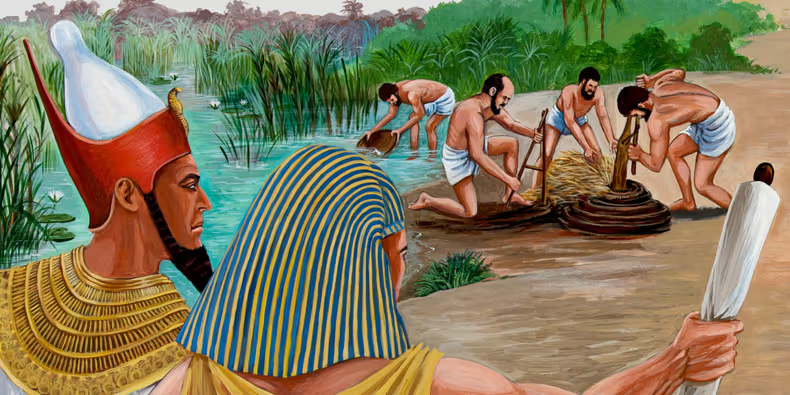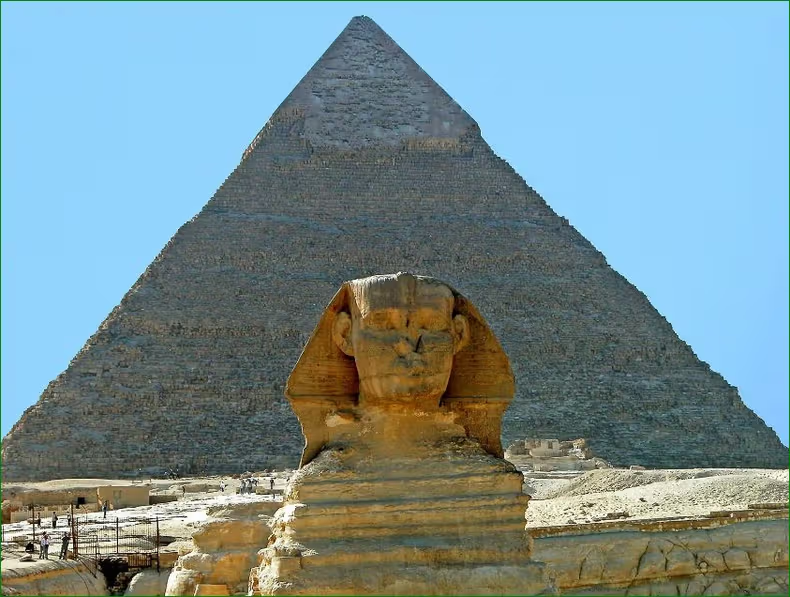- Chronological Mismatch: The pyramids were primarily built during the Old Kingdom (2686-2181 BCE), a period predating the events recounted in the Old Testament by over a thousand years.
By the time the Israelites were believed to have been in Egypt (around the 13th century BCE), the pyramid-building era was long gone. The biblical focus is on the Israelites’ experiences in Egypt, not on its ancient wonders.
Chronological Mismatch: The pyramids were primarily built during the Old Kingdom (2686-2181 BCE), a period predating the events recounted in the Old Testament by over a thousand years.
By the time the Israelites were believed to have been in Egypt (around the 13th century BCE), the pyramid-building era was long gone. The biblical focus is on the Israelites’ experiences in Egypt, not on its ancient wonders.

- Focus on the Israelites: The Old Testament prioritizes the story of the Israelites, their relationship with God, and their journey towards becoming a nation. It’s not a comprehensive history of Egypt. The pyramids, while impressive, wouldn’t have directly served this narrative purpose. The Bible mentions specific Egyptian elements relevant to the Israelites, like the Nile River and brick-making (Exodus 1:11), but grand tombs wouldn’t have factored in.
- Theological Concerns: The pyramids were intricately linked to Egyptian pharaohs’ divinity and their perceived right to rule. The Old Testament, on the other hand, emphasizes monotheism – the belief in one God. Mentioning these pharaonic monuments might have muddied the waters by acknowledging their claims of godhood.
- Perspective and Purpose: The biblical text is a compilation of various traditions and writings, passed down over generations. The focus was on religious teachings, laws, and historical events relevant to the Israelites. Describing architectural marvels wasn’t a primary concern. The pyramids might have been simply considered part of the landscape, not requiring specific mention.
It’s important to note that the Bible does use the Hebrew term “migdol” (Strong’s Concordance H4024), which can refer to towers or fortified structures. Some scholars speculate this could indirectly allude to the pyramids, but there’s no definitive evidence.

Here’s another interesting angle: the Bible mentions brick-making by the Israelites as forced labor for Pharaoh (Exodus 1:11). This could point towards the construction of royal or public buildings, not necessarily pyramids.
Beyond the Omission
The absence of the pyramids doesn’t diminish the historical significance of either the biblical narrative or the Egyptian wonders. They represent different aspects of the past. The Bible offers a theological and historical account centered on the Israelites, while the pyramids stand as silent sentinels to a bygone era’s engineering prowess and religious beliefs.
Further Exploration
If you’re curious to delve deeper, here are some avenues to explore:
- Read about the history of the pyramids and their significance in ancient Egyptian culture.
- Explore the archaeological evidence related to the Israelites’ presence in Egypt.
- Consider the development and compilation of the Old Testament and its focus.
Understanding the reasons behind the pyramids’ absence enriches our appreciation for both the Bible and these ancient structures. They represent different narratives, each offering a window into the past.
This content is generated by an AI model and verified by the writer



























